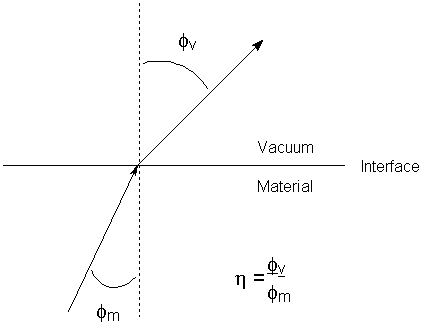
Refractometry
The refractive index is a physical property that is characteristic of a pure compound. Like a melting point, it can be used to confirm the identity of a compound, or to assess its purity, by comparison with a known (literature) value.
Principles of Refractometry
You should be familiar with the general principle of refraction: any time a light
ray moves from one material to another at an angle, it changes direction. This is
the principle by which a rainbow is formed. The ratio of the angle of refraction in
a vacuum versus that in a material of interest is the material's index of refraction.

For practical purposes, air is normally used as a reference instead of a vacuum, since it's index of refraction is very close to (but not precisely) 1.0.
The Abbé refractometer passes light through a thin film of your liquid sample.
This illuminates a reference mark, and movement of an adjustment knob to adjust the visual
alignment of this mark with a reference is correlated with a calibration scale to make the
measurement.
We have two types of refractometer. The older, Bausch and Lomb
instrument is described first; the newer Mark II is described
second.
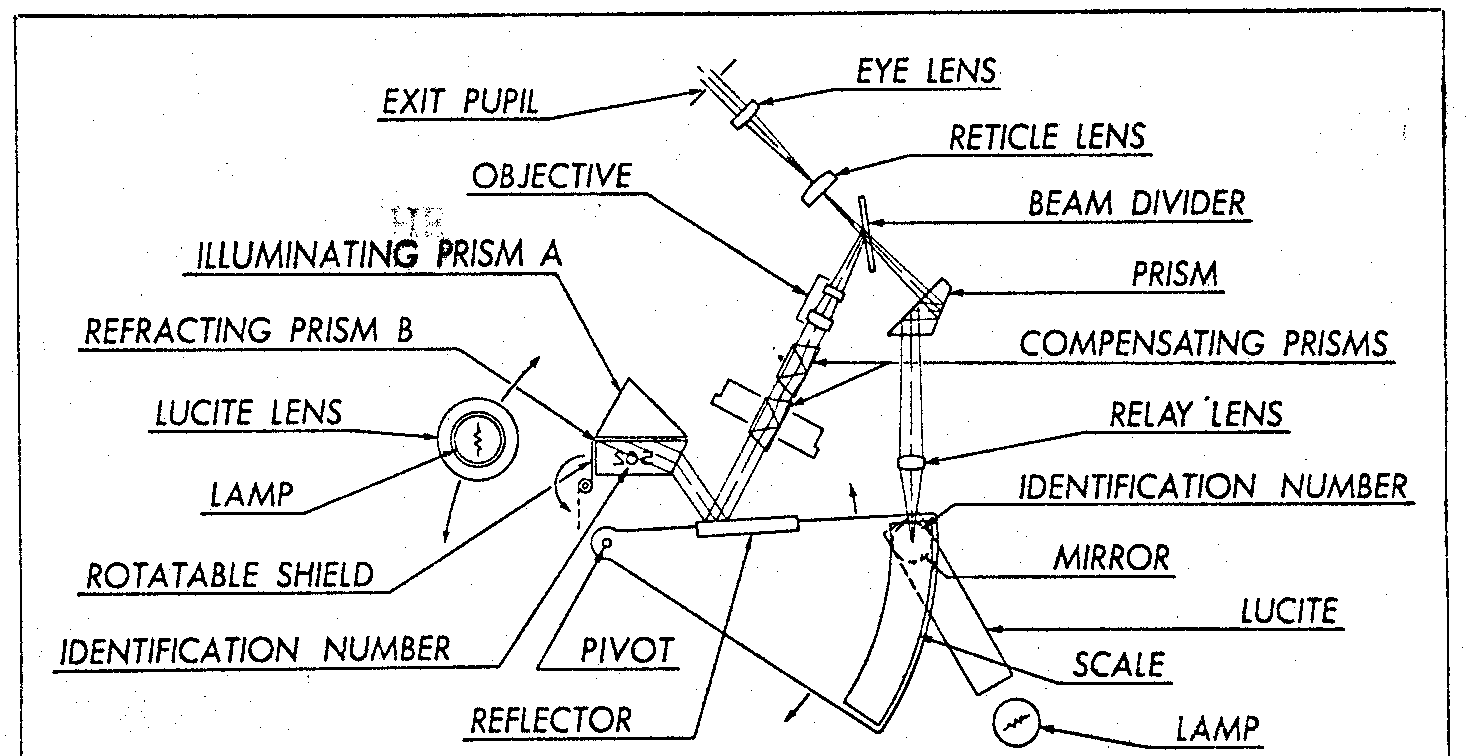
Use distilled water as a test sample to learn how to use the refractometer; its index of refraction is 1.3329 at 25°C.
Place several drops on the sample prism. (If you do not use enough sample, it will be difficult to see the mark; if you use too much it will splash out of the sample area and potentially contaminate the area.) Close the sample prism firmly, and swing the lamp up against it. Press the switch button at the back left of the instrument to illuminate the scale in the eyepiece; turn the large knob on the right of the instrument until 1.333 appears in the crosshairs:
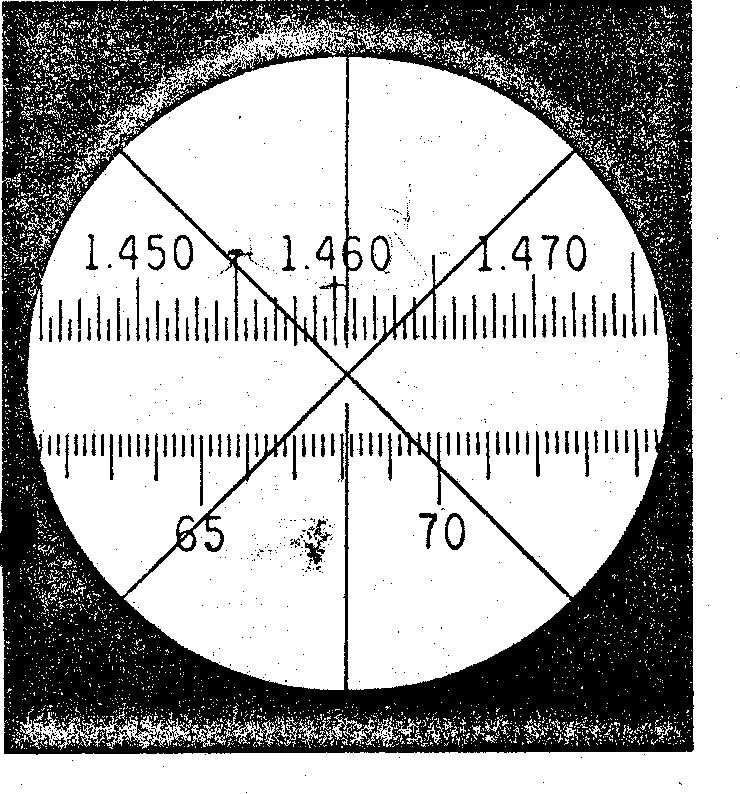
If the scale is out of focus, readjust the eyepiece.
Releasing the switch causes the view to change to the alignment mark. Center the
mark in the crosshairs:
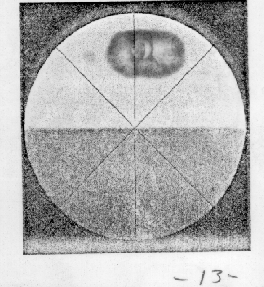
Re-illuminate the scale, and read to 5 significant figures using the top scale.
The image above reads "1.4606."
To run multiple measurements, move the adjustment knob off your reading, recenter the
mark, and reread the scale. Record each measurement in your notebook, along with the
temperature.
Clean the instrument for the next person.
Use distilled water as a test sample to learn how to use the refractometer; its index of refraction is 1.3329 at 25°C.
The optics of this model are similar to the Bausch and Lomb instrument; application of the sample is identical:
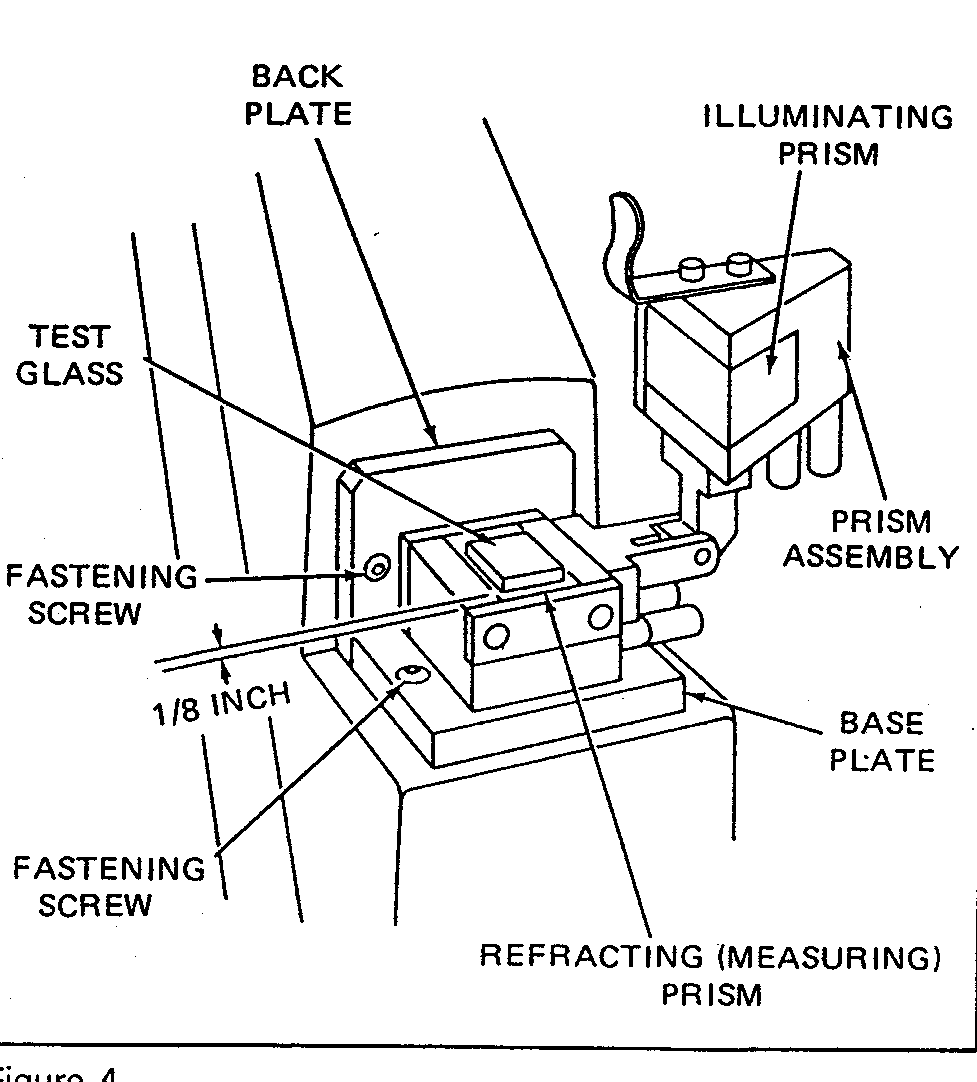
Apply the sample: use enogh to cover the prism, but not too much. Adjust the focus until you can see the horizontal mark (Hint: turn counterclockwise if the field is dark, clockwise if it's light.) Now, turn the control knob to center the horizontal mark in the crosshairs:
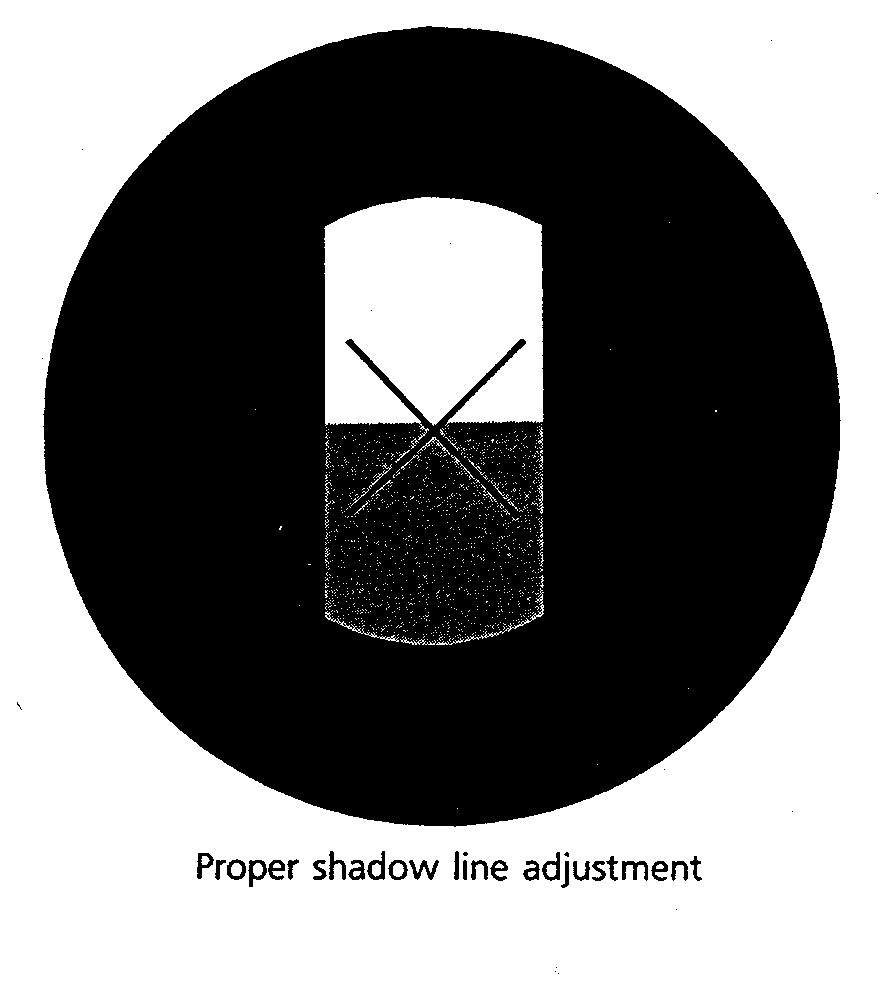 |
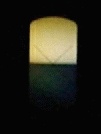 A photo showing what you will see. |
Press the READ button on the front of the instrument; the refractive index will appear
in the LED display.
To run multiple measurements, move the adjustment knob off your reading, recenter the
mark, and reread the scale. Record each measurement in your notebook, along with the
temperature.
Clean the instrument for the next person.
Careful cleaning is critical to our continued use of these instruments. The major
enemy is dust and grit. Also Kim-wipes are very abrasive and can easily scratch the
prism glass. Always use cotton balls to carefully wipe away sample; then rinse with
methanol and a clean cotton ball.
Refractive index is a function of temperature, not least because of density changes in condensed materials with changes in T. A simple correction can be applied in most circumstances to allow you to report a value in the standard way: at a temperature of 25°C.
hD25 = hDy - (25.0 - y)(0.00045)
The actual temperature of the measurement is y (in °C). hD25 is the index of refraction, using the sodium D line, at 25°C; hDy is the index of refraction you measure at y°C. You want to report your measurement, with its 95% confidence limit, corrected to 25°C.
Back to CH362 Home Page
Last updated:
01/14/2002
Comments to C. Pastorek